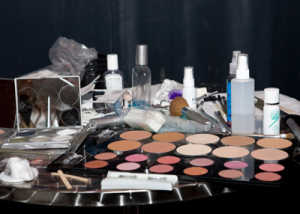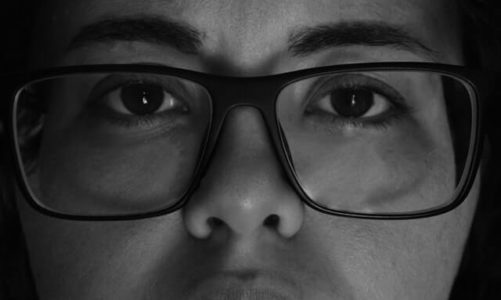
I wrote a post a while back about how Beauty is in the Eye of the Beholder, and discussed many of the methods used in the early days to beautify oneself. But I’d like to take this opportunity to go a little deeper into the beginning of cosmetics and the poisonous discoveries I’ve uncovered.
First Uses of Cosmetics
We can go back more than 5,000 years in history and see how the Ancient Egyptians were using eye shadow. But they didn’t use this technique just for making themselves look pretty. The found that by painting their eyelids and the area around the eyes it would help to protect them from the sun’s glare. But their makeup wasn’t quite the same as it is today. For instance, their eye makeup was a thick paste of malachite, or bright green copper salts.
There were also other ancient women from Egypt that preferred using a blue colored eye shadow, such as Queen Cleopatra. These cosmetics were made from ground up lapis lazuli stones and malachite. She would then use pieces of kohl to darken her eyebrows and eyelashes. This kohl substance should not be confused with “coal” as we know it today. Kohl was a mixture made up of powdered lead sulphide and sheep’s fat. Now doesn’t that sound tasty.
Then she would finish off her lips by using red ochre, which is merely a iron stained clay. She would also use this cosmetic for highlighting her cheeks. Finally, she would paint her palms with henna, this gave them a younger pink look.
I’ll go into a little bit about Henna for those curious sorts. Henna is a reddish brown colored dye that was made from Egyptian privet. This was thickened with a wood type substance known as tannin. Tannin was found mainly in the wood or bark from fruit trees such as acacia. This Henna substance once completed was used by women as a nail polish and even the men sometimes used it to dye their beards or hair.
Cosmetics and Makeup in Ancient Greece
The ancient Greeks some 2,000 years ago began a new fad in the field of cosmetics and makeup. They believed that a woman having a pale colored face was more beautiful. The age of the rouged cheeks and pink glows was over. So they came up with an inventive way of achieving this.
They concocted a mixture made of white lead and wax that was mixed with fat, oil or egg whites and used this as a face powder. This cosmetic was also known as ceruse. This was just what the doctor ordered as far as getting that white, ghostly look. But it was also quite poisonous.
In the long term, this ceruse and it’s lead content began to absorb into their skin. The results or side effects consisted of loss of appetite, upset stomachs, dizziness, shortness of breath, paralysis, headaches, blindness and could even result in death. Funny how this list of side effects sounds shockingly similar to some of those commercials you see on TV today.
The Romans Had to Look Pretty Too
During the 1st century AD, cosmetics and makeup were quite popular in not just women but the men as well. They were both known to use white and red lead in their beautification efforts.
The Emperor Nero and Poppaea both used face paints made of lead. But they had introduced a new technique as well. They used a face pack made of dough and donkey milk, this was applied at night so it could work it’s magic while they slept. Over the course of the night it would soak into their skin and was meant to counteract the effects of the poisonous lead based paints that were used on their faces during the daylight hours.
How Renaissance Europe Poisoned Themselves
The 15th and 16th century Europeans were no exception to this wave of poisonous cosmetics. Many of you are probably familiar with the term belladonna. Belladonna was the juice found in a lethal nightshade plant and was applied as an eye drop.

The Renaissance women also wore scarlet lipstick made of cochineal. Cochineal was made from dried female scale insects that were normally found dwelling on Mexican cacti. They would take this dye and bond it with egg whites and alum. It was then formed into a pencil shaped lipstick by use of plaster of Paris or alabaster.
Moving into the 17th century the advances were becoming more and more deadly. They actually found a method to remove unsightly freckles by using mercuric chloride. Can you believe that, mercuric chloride is so deadly that 1 small gram is enough to kill a person. When this stuff absorbs into the skin it immediately starts killing tissue cells and eventually will destroy the nervous system.
The Poisonous Makeup Continues into the 18th Century
We’re starting to see a trend here with the ancient cosmetics, most of these substances were quite poisonous to the body. But regardless of these ill effects, the white and red lead based cosmetics were still introduced in Western Europe by the returning crusaders. This dangerous stuff was actually used well into the 18th century!
Luckily cosmetics, makeup and beauty products have come a long way since the hazardous methods used by our ancestors. I suppose they all suffered in the name of science, after all, without all their errors, cosmetics wouldn’t be as regulated and safe as they are today.
If you’d like another interesting read on the more modern approach to the production of makeup and beauty products, then check out Zack Love’s post, France Harvests Snail Slime for Beauty Products.



Hi Robert, I’m curious how in Queen Cleopatra’s age could find some cosmetic but had no any risks, especially for the queen herself. It’s not easy to find the best one for our skin you know. Their experts must be great people at the time 🙂
Well it’s hard to say Darasi if in fact the cosmetics she used were or were not harmful to her health. Many of the ones used in those times were quite poisonous to the body. But Ancient Egypt was a mysterious time filled with many customs and practices, but contrary to popular belief, Cleopatra was not Egyptian, but she did rule Egypt. She was actually part of the Macedonian Greek dynasty that ruled Egypt.
And as you may or may not know, even though she concentrated so much effort of glamour and looking beautiful, her life was actually filled with sadness.
But to answer your question, many of the compounds that she used as cosmetics were in fact quite harmful especially the products consisting of lead.
Fascinating article. Good looking people have an edge and I guess they always have. Todays products are better but I have heard of problems with eye drops, strong sunscreens and face powder.
Yes Mary Ann there is definitely a lot of weight put on beauty. That seems to be more important these days then it used to be.
But I think you’re right about the issues with some of those products, regulation standards have to be very tight to make sure the market isn’t flooded with harmful products.